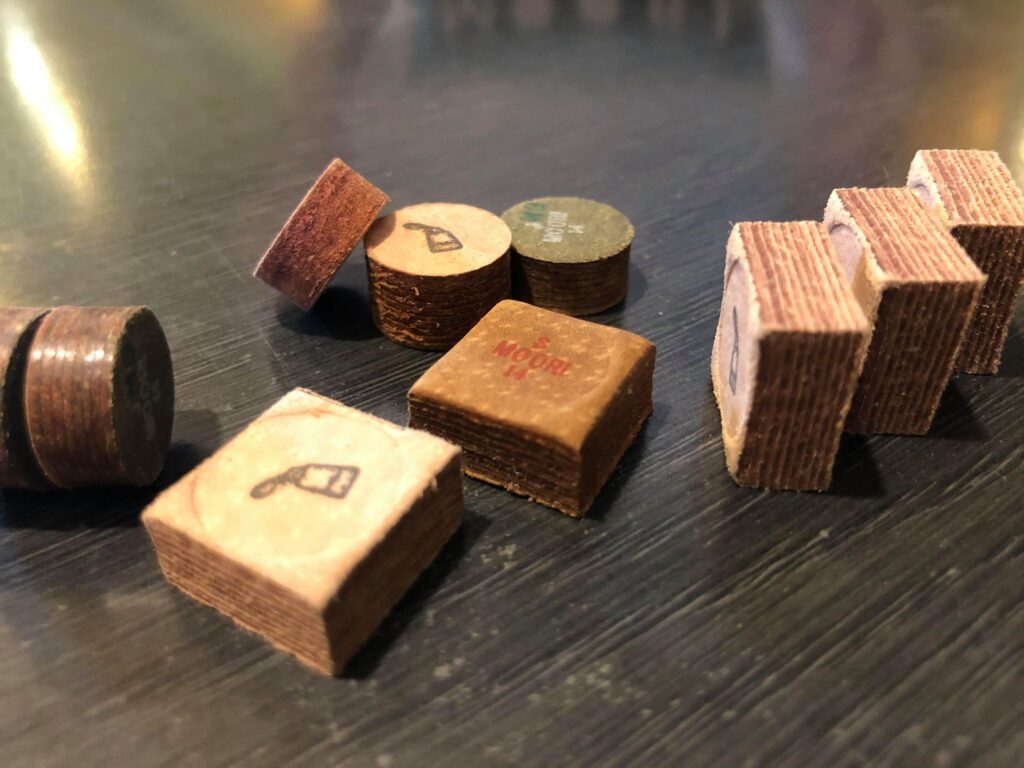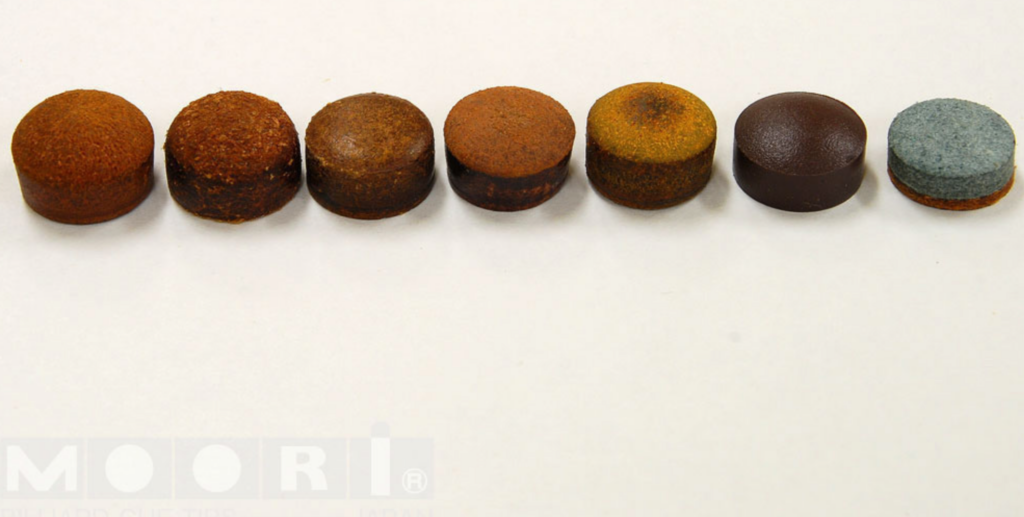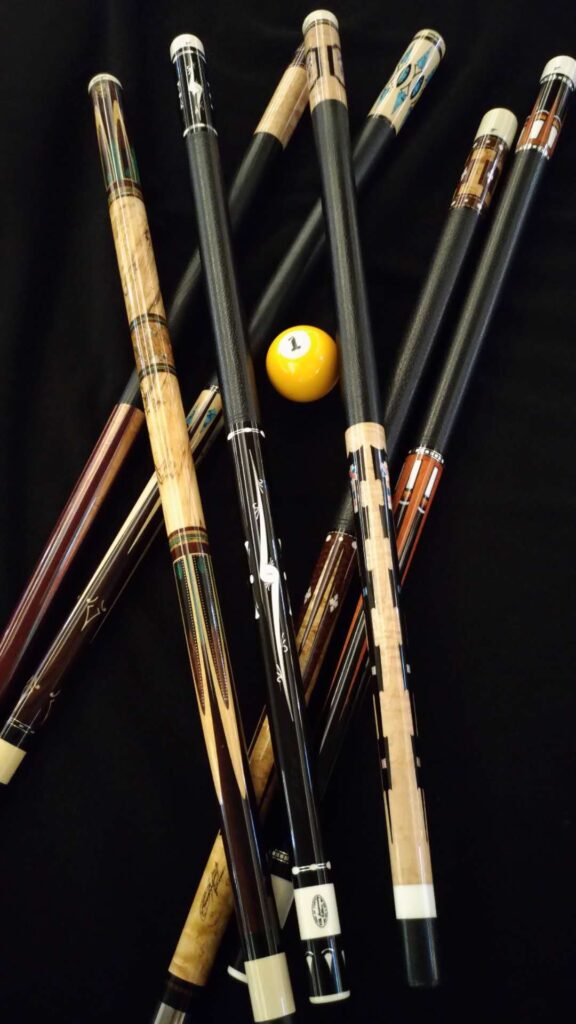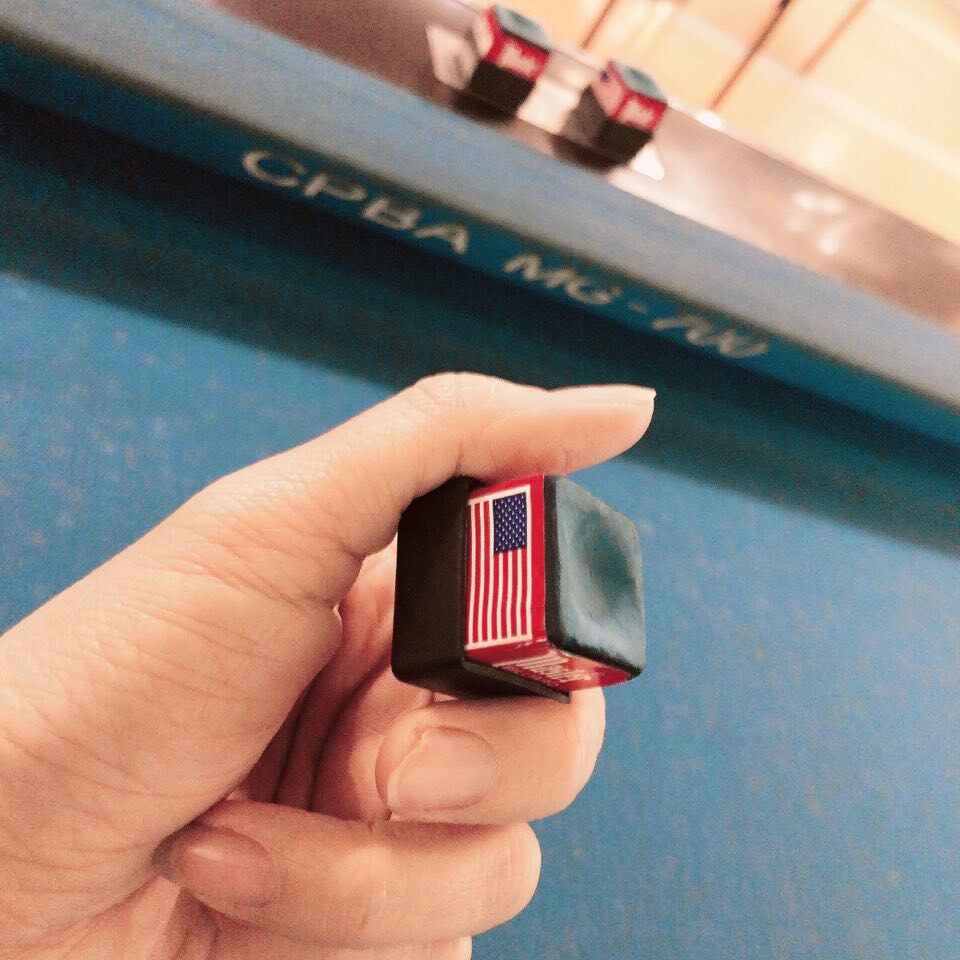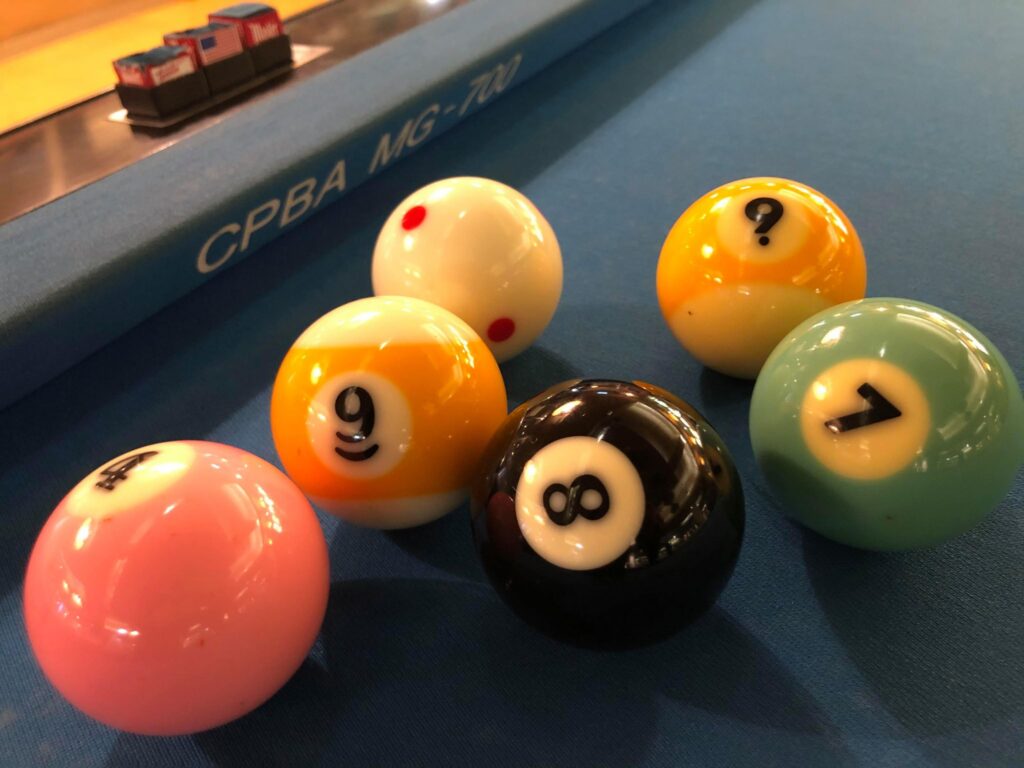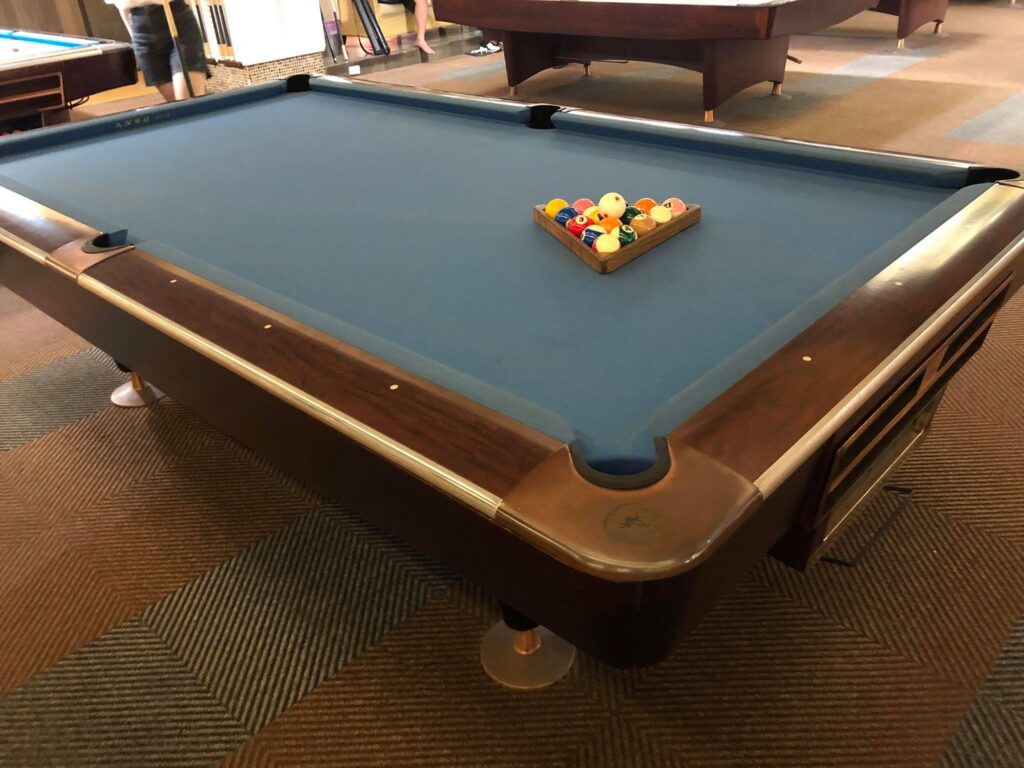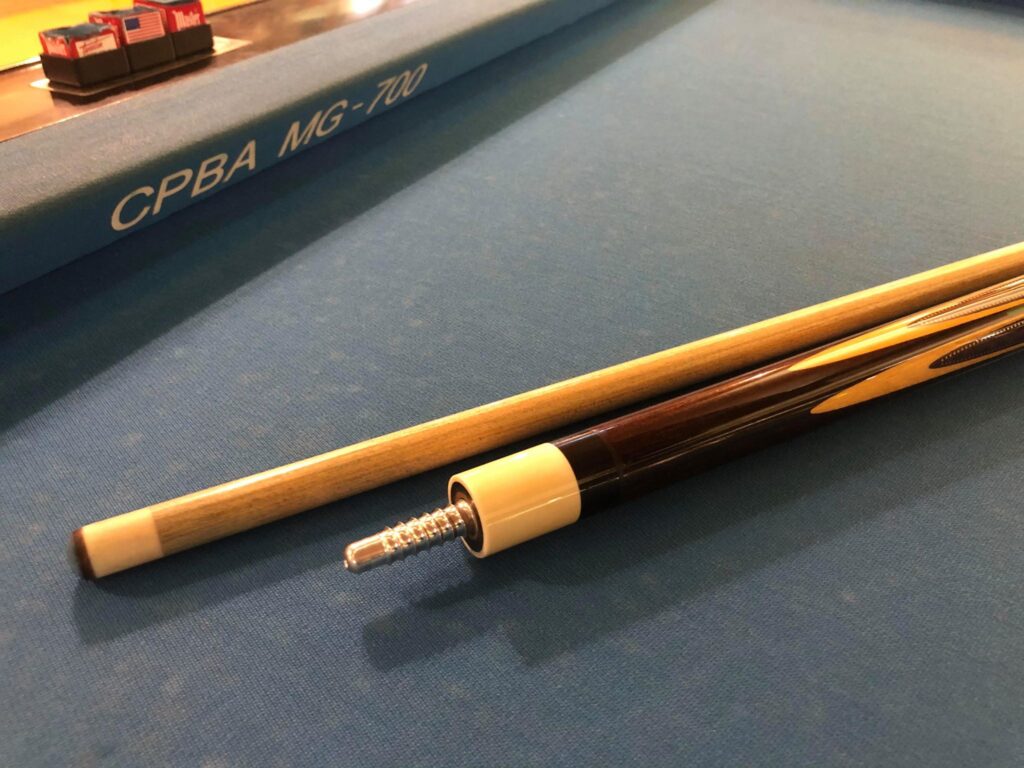There are three different styles of lamination.
“multi-layered,” “laminated,” and “Moori style”.
In this article, I’ll talk about why we arrived at “layering” in our tip development.
Of these, the term “Moori style” has since come to be used as “one of the formulas” beyond the tip.
Moori tip is the original “laminated tip”, but we weren’t actually the first to refer to the tip and say “laminated structure”.
The reason it became “Moori tip = stacked” is because that’s what American players called it when they saw Moori tip.
I’ve even heard that there was a time when it was popular to say, “That’s the Moori style,” when multiple materials were pasted together to create something that had previously been made from a single board or single material.
Thick tips = good tips.
It is an absolute requirement to make thicker tips with increased bulk
However, we didn’t plan to make the tip stacked from the very beginning when we started developing it.
I started developing the tip about 30 years ago, and when I looked for leather to use as a material, I was able to find a thin but good quality leather that I could purchase consistently.
However, at that time, the main materials used for the tip corners were ivory and killer whale teeth, which had “eyes” that could break if the tips were thin.
In those days, thick tips were considered to be good tips because “the thicker the tip, the less risk of breaking the leading edge of the tip”.
In other words, the absolute requirement for player acceptance was to increase the bulk and create a thicker tip.
It wasn’t acceptable to say “It’s thin but the quality is good”, and it was clear that a reworked version of a thin monoplane that players were unhappy with wouldn’t sell.
So I gave up on that leather and looked for another one.
However, when it comes to leather that is thick enough to be used as a veneer, there were some, but when it comes to something that can be purchased stably, I couldn’t find it anywhere no matter how much I looked for it.
That’s what it should be.
At that time, high-end tips were coming in from France about once a year, but there was a complete difference between the tips that came in the year before and the ones that came in this year, even from the same manufacturer.
The quality was dropping more and more, and the leather was visibly thinning.
There was no way that good quality, thick leather suitable for tips would be available on the market, when even the century-old French manufacturer was no longer able to source thick leather.
On the other hand, if you simply want to increase the bulk, there is the traditional method of using a “seat” (*1).
We attach a seat to the top of the leading corner to gain height.
But even the long-established French manufacturers are only able to make thin veneer tips, so they can make veneer tips using the limited amount of thin leather available in Japan, and then put a seat on it and say, “How would you like that? There is no way it can be accepted.
By the way, making tips has stopped being a hobby since I was thinking about these things.
I’ve come to feel that if we don’t put product value somewhere, we won’t be able to compete and we’ll end up with garage work.
‘If you can get the thin leather to hold together well
It can be infinitely thicker.
Well, no matter how hard we try, we can’t consistently buy cattle hides that are more than 6 mm thick, which was the requirement for “good tips” at the time.
On the other hand, you can get thin but good quality leather.
But it doesn’t qualify as a good tip if it’s not thick.
A thought occurred to me after thinking about a difficult subject.
Why don’t you try sticking thin leather together? It can be made infinitely thicker if it can be upholstered well.
So, at first, I bought thin, high quality cowhide and pasted it together.
However, the skin of a cow is strong because of its thickness, and it is very weak when sliced thin.
So we were able to glue it together, but when we hit the ball, the fibers broke immediately and it broke with a crunch.
As it is written in the book of leather, the way the fibers of the leather intertwine is called the “three-dimensional weave structure” and the strength of the leather increases four or five times when the thickness is doubled.
On the other hand, if you cut the fibers in one piece, the strength of the product will be significantly reduced.
This is true for animals with strong, thick skins other than cows, such as elephants and bears.
So I thought, “Are there any animals that are originally thin-skinned and strong?
And then there it was.
That’s what pigs are.
Pigs have a lot of subcutaneous fat, and their skins have only about two millimeters of thick fat on the outside at best.
If you slice that 2 mm of skin to smooth it out, only 1 mm is left at most, but pig skin is originally thin and strong, so even if you smoothed out the surface, the fiber fragmentation was minimized and the strength was almost unchanged.
Therefore, we decided to use thin but very strong pigskin as the material for Moori tips.
If we can get quality at a higher level, I’m sure they’ll buy it at many times the current unit price.
By the way, in the old days, a box of 50 tips was the norm, and it was natural for the quality to vary.
Knowing this, players want to choose only good tips from a box and buy them, but from the seller’s point of view, it’s embarrassing if only good tips are taken away and only poor quality tips are left.
In those days, it was common to buy tips at the billiard hall and ask the clerk to install them.
So the billiard hall used to buy a box of tips and sell the tips according to “A-rank for the good players”, “B-rank for the average players”, and “C-rank for the lending cue”.
There were also people who bought one box individually, took only the A rank by themselves, and sold the rest to others.
However, not only was there unevenness in the contents of the box, there was also unevenness from box to box.
Therefore, if I bought a box with a lot of winners, I felt like I was getting something out of it, while if I bought a box with only B rank, I felt like I was buying something expensive.
That’s why many senior players, including professional players, were thinking this way.
If it’s good, I’ll buy it even if it’s expensive, so let me choose it.
I’ll give you 1,000 yen or 2,000 yen for a luxury item.
In other words, we didn’t have the idea of “I want good things to be sold cheaply.
Incidentally, the unit price of a tip at that time was about 100-300 yen at retail, and you could buy a fairly good tip for about 400 yen.
When I saw that situation, I thought, “That’s it.”
The idea was that people would pay many times the unit price of a tip to buy a box because they wanted a good tip, so we thought, “If we can make the quality at a higher level, people will buy it at many times the current unit price.
However, no matter how good and thick the leather you can get, you can’t stabilize the quality of your tips if you make them from a single piece of meat, such as a fillet or a sirloin.
In other words, a single plate of cattle is not good enough to achieve the same quality and to eliminate the errors.
So I thought, “This can only be stacked now.”
There are two reasons why Moori tip is laminated in this way.
Making it thick is one thing.
And one more thing is to stabilize the quality.
This is the raison d’être of lamination, and this is how the laminated tip “Moori tip” was born.
A part installed between the tip and the tip angle to protect the tip angle. It is made by compressing thin leather that is hardened with paper or leather.

